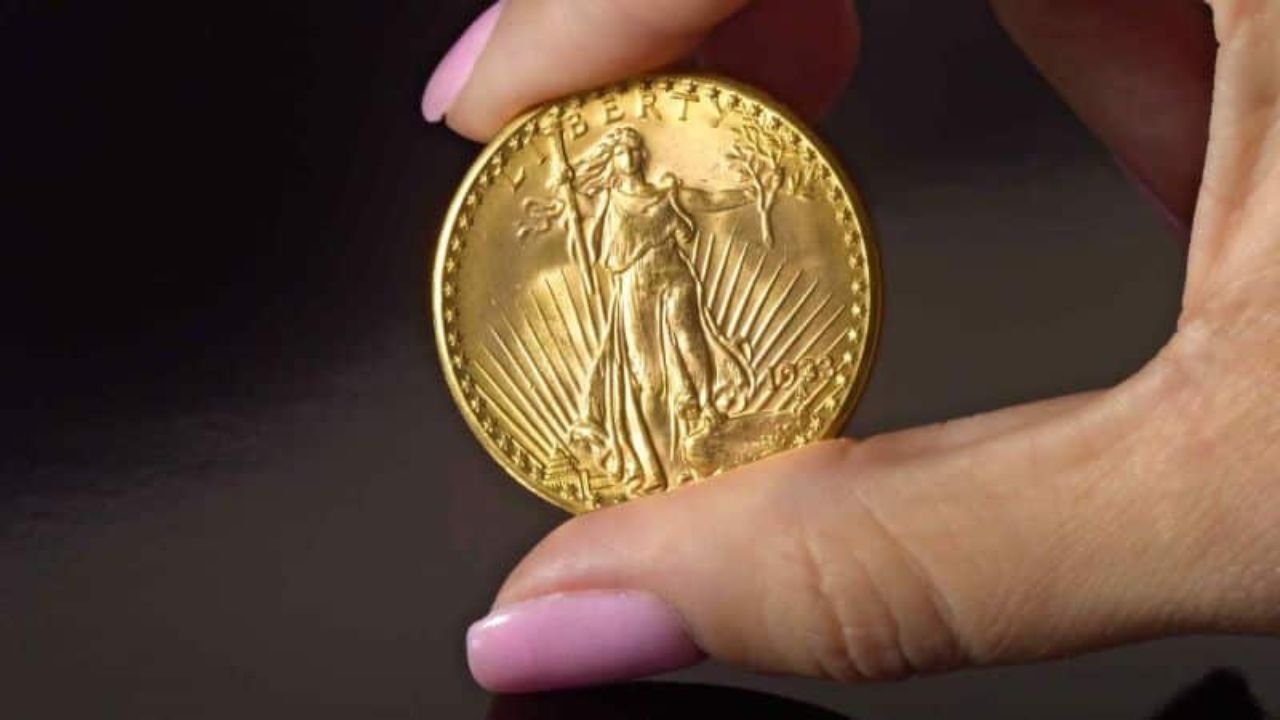6 Rare Coins Priced at $2 Billion Each – Rare coins mesmerize collectors, historians, and treasure hunters alike. Coin with a billion-dollar value evokes visions of the mysterious, historical, and glamorous. While no coin has ever officially made it to a listed value of $2 billion, the world’s rarest coins have drawn sky-high bids at auctions and private sales, establishing a legend of their own.
This article tells the stories of six rare coins, some of which are without a price; we look at their historical and monetary importance.
6 Rare Coins Priced at $2 Billion Each
| Coin Name | Estimated Value | Key Details | Historical Significance |
|---|---|---|---|
| 1933 Saint-Gaudens Double Eagle | $18.87 million | U.S. $20 gold coin, never circulated due to gold standard changes | Symbol of economic transition during the Great Depression |
| 1794 Flowing Hair Silver Dollar | $10 million | First U.S. silver dollar, minted in 1794 | Represents the birth of U.S. coinage |
| 1787 Brasher Doubloon | $9.36 million | Privately minted gold coin by Ephraim Brasher | Highlights private minting in early America |
| 1804 Draped Bust Dollar | $3.8 million | Known as the “King of American Coins” | Diplomatic gift with only 15 examples known |
| 1913 Liberty Head Nickel | $4.56 million | Unauthorized mintage of five coins | Mystery and rarity make it iconic |
| 1894-S Barber Dime | $1.32 million | Only 24 minted, with nine known to exist | Reflects VIP culture in U.S. Minting |
The various charms presented by rare coins lie in the artistry, history, and value that they present at some point in time. From the 1933 Saint-Gaudens Double Eagle to the 1894-S Barber Dime, these coins are tales that transcend their values. If you are an established collector or starting afresh, these legendary coins give you just a glimpse into the interesting world of numismatics.
The Fascinating Stories Behind These Rare Coins
1. 1933 Saint-Gaudens Double Eagle
The 1933 Double Eagle is a much-revered coin, not just for its design, but also for the tragedy of its history. Originally cast as a coin that should have been circulated during the Great Depression as a $20 gold coin, the country turned its back on the gold standard before those coins ever saw circulation. Most were melted down, but there were just a few that escaped the fate of death-by-melting. One such specimen was sold at an auction in Sotheby’s in 2021 for an astonishing $18.87 million.

Fun Fact: The designer of the coin, Augustus Saint-Gaudens, was also the one who designed the $10 Indian Head gold piece.
More than a coin, the Saint-Gaudens Double Eagle is a symbol of resilience in one of the country’s worst economic periods. It serves to remind the collector of the intertwined relationship between economy, policy, and craftsmanship.
2.1794 Flowing Hair Silver Dollar
The American silver dollar is considered to be the first coin of its kind to be minted in the U.S. Its famous design features Lady Liberty with flowing hair from the obverse and an eagle on the reverse. It is believed that only about 140 examples came to existence, making it a true gem for collectors. An example, graded as the finest-known specimen, sold for $10 million in the year 2013.
Key Detail: The coin’s minting was an important step toward establishing U.S. currency.
The Flowing Hair Silver Dollar is one of the cornerstones of American numismatics. Its design accurately reflects the aspirations of a young nation striving to create its own identity for itself. It is sought not only for its rarity but for its large historical importance.
3.1787 Brasher Doubloon
Produced by New York goldsmith Ephraim Brasher, this excellent example of a rare gold piece is distinguished by the “EB” hallmark stamped by Brasher himself. These coins are almost nonexistent and unmatched in their workmanship. In 2021, a Brasher Doubloon was sold at a private sale for $9.36 million, solidifying its place in numismatic history.
Historical Note: Brasher’s contributions were some of the earliest commodity minting by private individuals in America that helped mold the fabric of the country’s monetary system.
The Brasher Doubloon is an interesting specimen of the creativity and entrepreneurial spirit of early America. The story behind it is a reminder of how personal attention and ingenuity made establishing individual financial independence possible in a fledgling nation.
4.1804 Draped Bust Dollar
This coin, the “King of American Coins,” was not struck at all in 1804 but instead a number of years later for inclusion in diplomatic gift sets. Rare and that being the case, it is a collector’s dream for its design. One Class I specimen went for $3.8 million in 2017.
Collector’s Insight: The coin’s diplomatic origin makes it feel exclusivistic or intriguing.
The Draped Bust Dollar illustrates how coins can go beyond their economic purposes to become mementos of goodwill and diplomacy. Their rarity elevates their desirability to the point where this kind of coin becomes the center of any collection.
5.Liberty Head Nickel, 1913
The events surrounding the making of the coin are shrouded in mystery. Although the U.S. Mint officially stopped producing Liberty Head nickels in 1912, five examples bearing the 1913 date exist. The circumstances of their creation remain obscure. One sold for $4.56 million in 2018.

Interesting Fact: The coin shot to fame when it featured prominently in “Hawaii Five-O.”
The Liberty Head nickel is a tale of intrigue, secrecy, and perhaps even subterfuge. Its mysterious origin adds layers of fascination, making it one of the most complexly discussed coins in history.
6.1894-S Barber Dime
The 1894-S Barber Dimes are some of the rarest coins in the U.S., with only 24 coins struck possibly as gifts to bankers or distinguished officials. Today, only nine are known to exist. One sold for $1.32 million in 2016.
Why It’s Special: The significance lies in its limited mintage portion as being secretive with regard to value.
The Barber Dime is but an exclusive, potent symbol of privilege and an intriguing part of any numismatic narrative.
Rare coins are valuable for a number of reasons:
- Rarity: The fewer coins in existence, the greater the value.
- Condition: Coins that are in mint condition sell for more.
- Historical Relevance: Coins that commemorate important events in history are extremely desirable.
- Collector Demand: Prices escalate to phenomenal levels when demand persists.
These and additional factors include cultural and emotional ones. Coins may serve as physical reminders of a historic event, which can be practically priceless for that specific collector.
A Profound Guide for Would-be Collectors
- Begin with Low Hopes
Buy low collectible coins first, and go for the rare ones later. Actually, good websites like the Numismatic Guaranty Company (NGC) would really help the novice collector in the domain. - Understand the Basics of Grading
Grading is the process by which the condition, and hence value, of a coin is determined. New collectors must become familiar with grading systems such as the Sheldon Scale, which classifies coins from 1 (poor) to 70 (perfect). - Storage for a Lifetime
The protection of coins from any damage is very important. Coins ought to be held securely in holders, albums, or double holders, while keeping moisture and scratches away. - Seek Trustworthy Advice
Before any major purchases talk with a reputable dealer or join numismatic societies and seek their guidance. - Always Be Updating
Keep yourself informed about auctions of coins, market trends, and the latest history in numismatics.
FAQS:
How can I know if a coin is actually of value?
You check out things like rarity, condition, and how historically significant the coin is. A professional appraiser brings accurate insights.
Where can I get rare coins?
Check out trusted auction houses, reputable numismatic dealers, or websites like Heritage Auctions.
Is it good to invest in rare coins?
Rare coins can be a good investment, but you must understand the expertise and market. Consult with experts before any big purchases.
How do I protect my coin collection?
Store coins in an atmosphere with controlled temperature and use protective storage, namely boxes, to prevent damage.
What is the costliest coin ever sold?
That record, the 1933 Saint-Gaudens Double Eagle, became a sale finality of $18.87 million the very same year.

